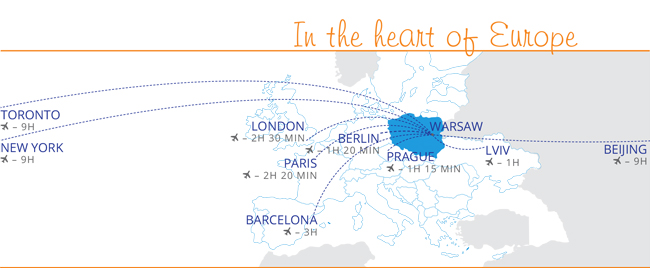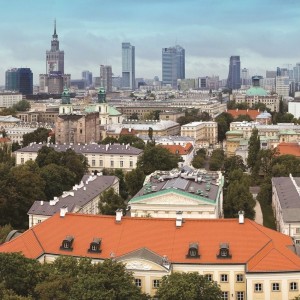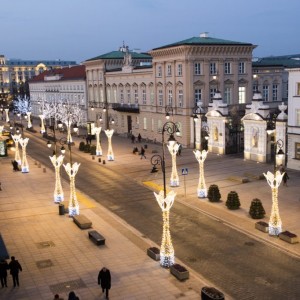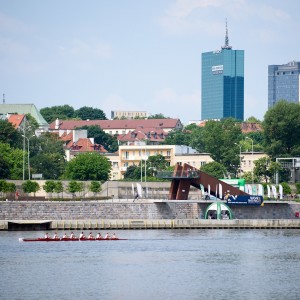Poland is a member of:
- European Union, the community of 27 states of the continent of Europe. The beginnings of the Union go back to the 1950s; Poland joined it in 2004.
- Schengen Area, which includes 27 European states. This means that whoever enters Poland may freely travel around all the member states: Austria, Belgium, Croatia, the Czech Republic, Denmark, Estonia, Finland, France, Germany, Greece, Spain, Lithuania, Luxembourg, Latvia, Malta, the Netherlands, Portugal, Slovakia, Slovenia, Sweden, Hungary and Italy, as well as four states from outside the Union: Island, Liechtenstein, Norway and Switzerland.
European Higher Education Area – European integration
Poland is one of the 47 counties constituting the European Higher Education Area, the establishment of which was the central idea of the Bologna Process. EHEA goes beyond the borders of the European Union.
Participating in the Bologna Process, Polish academies have introduced and continuously support:
- the three-cycle framework of higher education qualifications,
- the European Credit Transfer System,
- study programmes based on the so-called learning effects, which facilitates comparing diplomas in the European framework of qualifications,
- diploma supplements,
- the development of systems guaranteeing the quality of education,
- postgraduate study programmes in keeping with the idea of “lifelong learning”,
- student, scholar and administrative staff mobility, not only through participation in the Erasmus+ and similar programmes, but also by establishing foreign-language courses of study.
! To foreigners, Poland’s participation in the European Higher Education Area means:
- the ease of availing themselves of academic exchange programmes (due to the ECTS system and mobility support programmes such as the Erasmus+),
- the possibility of continuing a course of study initiated abroad in Poland, or continuing in Poland a course of study initiated abroad (due to the three-cycle division of courses),
- the certainty that education and qualifications gained in Poland will be fully recognised elsewhere, which facilitates employment or continuation of academic career (due to the European qualification framework and diploma supplements),
- the certainty as to the quality of education offered by Polish academies (due to the development of systems guaranteeing the quality of education).
Higher education system in Poland
650 years of academic tradition
132 public Higher Education Institutions (HEIs)
100 HEIs is authorised to confer doctoral titles
1.4 million students
500 programmes with a foreign language, mainly English, as the language of instruction
Academic tradition in Poland goes back 650 years, to the “studium generale”, the first Polish university, established in the mid-14th century. Poland was the sixth country in Europe to have its own university; the only older academies were those in Italy, France, Great Britain, Spain and Bohemia. The emergence of modern universities in the 19th century brought a breakthrough in the model of higher education in Europe; the University of Warsaw was instituted at that time, in 1816.
1.4 million students per year receive their education in Poland. This makes our county one of European leaders, preceded only by Great Britain, Germany and France. According to the European Commission research, the region of Mazovia, of which Warsaw is the capital, belongs to the continent’s areas where the largest percentage of young people, over 75%, are students.
International students
Polish academies offer a wide choice of programmes of 1st, 2nd, 3rd cycle studies and long cycle (uniform) Master’s studies, in full-time and part-time systems. Study programmes at the faculties of Medicine, Management, Foreign Relations and Economy are the most popular among foreign students. Foreign-language curriculum is developing as well; apart from 1,500 study programmes in Modern Languages, Polish academies offer over 800 programmes with a foreign language, mainly English, as the language of instruction.
Currently Polish academies are host to over 65,800 students from over 150 countries. Study programmes in Poland are most often selected by our eastern neighbours, the Ukrainians and Belorussians, as well as by students from Norway, Spain, Sweden, Lithuania, the Czech Republic.
Academic exchange
The Erasmus Programme, which used to be the most popular European student-mobility programme, was replaced by Erasmus+ in 2014. Poland was, and still is, their very active participant. In the course of two decades, our county was visited by 30,000 grantees from the European Union, and 100,000 Polish students went abroad.
Polish academies participate in other mobility programmes as well, not only within Europe but also worldwide. Mutual academic exchange programmes involve nearly 40 countries of the world and are addressed not only to students, but also to scholars.











